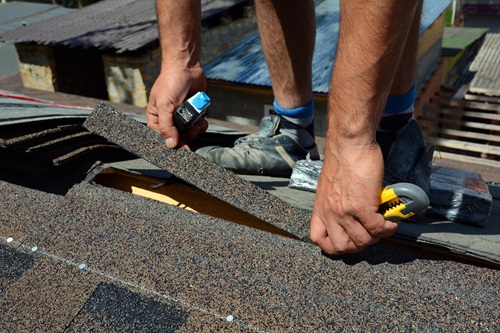
Deciding to tackle a winter roof replacement might seem daunting, especially when the weather brings icy winds and snow-covered landscapes. The good news is that replacing your roof during the colder months is not only possible but also effective with the right planning and expertise. By understanding how winter conditions impact materials, tools, and safety, you can ensure your winter roof replacement is successful.
Why Winter Roof Replacement Is Feasible
Many assume that roof replacement is best left for warmer seasons, but winter can be a surprisingly suitable time. With fewer scheduling conflicts and dedicated attention from roofing contractors in Greenville SC, your project could move forward more efficiently. However, the cold does present challenges, which we’ll explore next. Stick around to see why understanding material behaviour during winter is crucial for a successful replacement.
How Winter Weather Affects Roofing Materials
Roofing materials respond differently to colder temperatures, and being informed about these changes ensures you’re prepared for what to expect.
Shingles and Their Seasonal Sensitivity
Shingles, especially laminate ones, are designed to perform best in temperatures ranging from 39°F to 78°F. Below 39°F, they can become brittle, making them more prone to cracking during installation. That said, careful handling and techniques, such as using extra nails per shingle, can ensure they remain secure even in harsh winter conditions.
Additionally, shingles come with a self-sealant strip that activates with heat. Cold temperatures can delay this sealing process, but professional roofers can compensate with precision and expertise.
Sealants and Their Role in Roof Integrity
Sealants are vital in ensuring your shingles stay put and resist strong winter winds. While colder weather slows the activation of these adhesives, using more nails and high-quality sealants ensures your roof holds firm until the temperature allows the sealing process to complete.
The Impact of Winter on Roofing Tools
Winter doesn’t just affect materials; it also poses unique challenges for the tools used during roof replacement. Nail guns, compressors, and other essential equipment are susceptible to freezing, which can disrupt their functionality.
Nails and Depth Precision
In freezing temperatures, nails can become improperly driven—either too deep or not deep enough. Overdriven nails can damage shingles, while underdriven ones can create air pockets, making your roof more vulnerable to wind damage. Experienced roofers in Greenville SC keep a close eye on their tools and adjust them as needed to ensure optimal performance during winter roof replacement projects.
Health and Safety Considerations in Winter Roof Replacement
Safety becomes even more critical during winter roof replacement due to slick surfaces, icy conditions, and hidden hazards such as skylights buried under snow.
Prioritizing Professional Expertise
Hiring roofers who are trained in cold-weather operations is key. These professionals use safety measures like harnesses, ensure their equipment is properly maintained, and take precautions to prevent accidents on icy surfaces.
roof repairs in Greenville SC
Checking Insurance and Training Certifications
Before hiring a contractor, confirm they have valid insurance, including workers’ compensation and liability coverage. Additionally, look for certifications like Working at Heights Training to ensure they’re prepared for winter conditions.
The Advantages of Winter Roof Replacement
Though winter roof replacement presents its own set of challenges, there are advantages to tackling it during this time. Contractors are often less busy, which means they can schedule your project sooner. Additionally, addressing roofing issues before spring ensures you avoid water leaks caused by melting snow.
How to Ensure a Successful Winter Roof Replacement
To make your winter roof replacement a success, work with an experienced roofing contractor who understands how to handle materials, tools, and safety in cold conditions. With proper planning and skilled professionals, you can replace your roof during winter without compromising quality.
Common Questions About Winter Roof Replacement
Can shingles seal properly in winter?
Yes, shingles can seal properly in winter, but the process may take longer. Roofers often use additional nails to ensure stability until the sealant activates when temperatures rise.
Are there risks to replacing a roof in winter?
While there are risks, such as icy conditions and brittle materials, hiring experienced roofers who use specialised techniques minimises these issues.
How do winter roof replacements differ from summer ones?
Winter roof replacements require more attention to material behaviour and tool functionality due to the cold. However, with KM Roof and Home Repair, the quality of the installation remains consistent.
For expert advice and quality winter roof replacement, get in touch with your trusted roofing professionals. Call KM Roof and Home Repair now. Stay warm and protected this winter!
Like our Facebook page for more great info about roofing services.
KM Roof and Home Repair
Greenville, SC 29609
864-990-3252
www.kmroofers.com
Areas we serve: Piedmont SC, Fountain Inn SC, Simpsonville SC, Greer SC, Taylors SC, Greenville SC, Travelers Rest SC

No comments:
Post a Comment